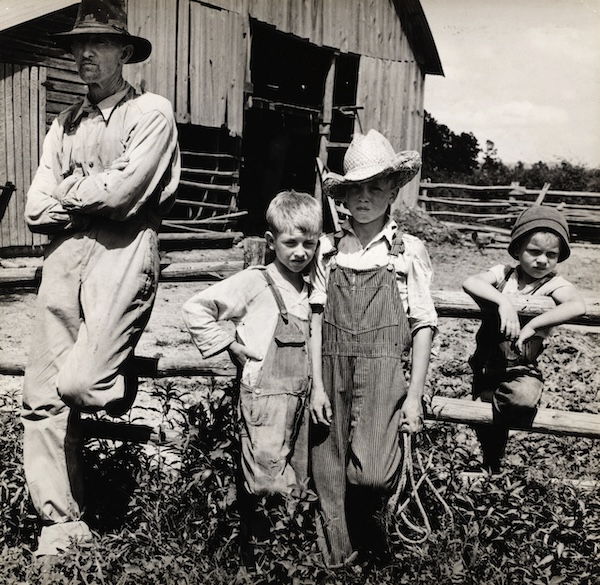Overalls have been a workwear favorite on the farm and beyond for over a century. Since then, they have gone on to become an iconic outfit staple in American fashion and pop culture. While manufacturers like Levi Strauss and Lee Jeans claim to have the first patents for overalls, the earliest versions of the garments can be traced all the way back to the 1700s, predating both Levi’s and Lee.
“Overalls” used to refer to several different types of clothes, including outerwear and undergarments. The name for the clothing item as we know it today comes from a utilitarian standpoint: you wear overalls over all your other clothes. For workers who often couldn’t afford to replace their clothes, overalls helped to protect their shirts and pants while they worked.
Today, the term refers mainly to “bib overalls” which are comprised of two components: the top “bib” that covers a person’s torso, and the trouser section, which is typically loose so clothing can be worn underneath. The style evolved from simpler working garments like slops (loose trousers worn by sailors and laborers), aprons, and coveralls.
The first mention of the overall style dates back to the late 18th century in writings by members of the British Royal Army that occupied India at the time. Historically, military “overalls” were loose garments worn over soldiers’ breeches and gaiters when on active service. The British started calling them “dungarees” for a heavy-duty fabric discovered in India. The heavy cotton twill originated in a village called Dungri, and was a precursor to the denim we know today.
Overalls were first mass produced in the US by Levi Strauss and Jacob Davis starting in the 1890s, though they were very different from today’s designs. Levi’s “waist-high overalls” were riveted denim pants held up with suspenders that attached with buttons. Missing was the signature “bib” that we associate with overalls today. Levi’s continued to be known as waist overalls until the 1960s, when the term “jeans” was finally adopted.
Around the turn of the century, Harry David Lee, founder of Lee Jeans, revolutionized the design by adding the bib and pockets and straps over the shoulders. In the late 1920s, Lee developed a “hook-less fastener” and created “button-less” overalls. Zippers soon replaced buttons, and suspender buttons were traded in for belt loops to attach over-the-shoulder straps
In first half of the 1900s, the growth of manufacturing, mining, railroads, and farming drove the popularity of overalls as the go-to choice for tough, durable workwear. During World Wars I and II, when men went to war, women stepped into factories and overalls became a symbol of female empowerment for working-class women. The overall design also became a favorite for kids’ playwear due to their practicality and durability.
Overalls post-WW II remained a common garment for physical laborers, especially farmers, loggers, and railroad workers. However, they also became associated with the poorest segments of the American population, particularly during and immediately following the Great Depression.
Starting in the 1960s, however, bib overalls took on a new life when adopted by the youth counterculture and anti-establishment movements as a rejection of traditional fashion. As the protests of the 1960s faded, so too did the popularity of overalls. But, as fashion is want to do, overalls made another big return in the 1990s. The default look was light-colored denim – almost acid wash – with one strap undone.
Overalls as popular fashion have continued to enjoy a resurgence every few years. They now come in various styles, from shortalls to flared legs, and in materials extending beyond denim and every color under the rainbow. Yet, overalls also remain the gold standard for workwear around the globe, and emblematic of making a living from honest, hard work. (Sources: Seamwork, NPR, Levi Strauss, Wiki)











